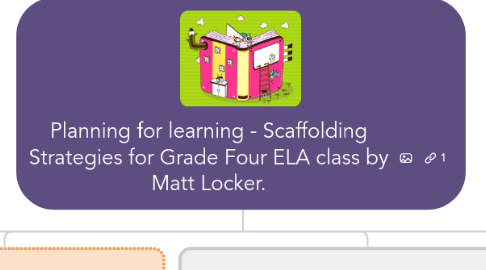
1. Big Ideas.
1.1. The reasons for the seasons.
1.2. Animals or Plants move and change based on the climate and environment.
1.3. Fluency and accuracy are important to help us communicate effectively and inquire independently.
2. Standards
2.1. CCSS.ELA-Literacy.RF.4.4 “ Read with sufficient accuracy and fluency to support comprehension.
2.2. CCSS.ELA-Literacy.RF.4.4.a Read grade-level text with purpose and understanding.
2.3. CCSS.ELA-Literacy.RF.4.4.b Read grade-level prose and poetry orally with accuracy, appropriate rate, and expression on successive readings.
2.4. CCSS.ELA-Literacy.W.4.2.a Introduce a topic clearly and group related information in paragraphs and sections; include formatting (e.g., headings), illustrations, and multimedia when useful to aiding comprehension.
3. Strategies and related Objectives.
3.1. 1. Cues and Mother Language. Before reading, the students will be given a list of vocabulary from the story to help them tune in to the story and the topic. In addition they will then have some time to use their first language with their peers and the Teaching assistants to ask any questions they may have about the vocabulary. (OBJECTIVE 2)
3.2. 2. Read Aloud Reading a grade level, text aloud to students at the start of the lesson can serve three important purposes: 1. support engagement, 2. support fluency, and 3. give ELLs some access to the text they’ll be working with. When reading a text aloud to students, I will use Apple TV to send it to the whiteboard. During the reading the students will use repeated reading and the gradual release of response method will be used. Teacher will read aloud , then the students as a whole, then in their groups and finally each student will read a characters lines. (OBJECTIVE 1)
3.3. 3. Graphic organizer/Mind Map and Building on Prior Knowledge. The lesson will be scaffolded by using a graphic organizer for the class, so they can show the story arc and characters. (Again this scaffolded because it is building on previous knowledge of the story arc.) (OBJECTIVE 3)
3.3.1. Story Map 1
3.3.2. Story map 2
3.3.3. Story map 3
3.4. Related Objectives
3.4.1. 1. Reproduce the "Fall is Here" play, reading (and remembering) fluently with accuracy and expression.
3.4.2. 2. Describe the changes that Fall brings via the changes the characters underwent.
3.4.3. 3. Students will create Stories incorporating the 5 Senses fluently and accurately, using digital media. (Synthesis)
4. Key Factors about students and Rationale.
4.1. A. Prior knowledge about the topic, B. intersts and C. readiness level.
4.2. Rationale for choosing these strategies.
4.2.1. Graphic Organizer / Mind Map and building on Prior Knowledge. - In the PYP building on Prior Knowledge is at the core of instruction, in line with the Vygotsky`s Zone of Proximinal Development. They help students visually show their ideas, organize information, and understand concepts such as sequencing and cause and effect. As a scaffolding tool they help guide and shape thinking so that it can be applied. Graphic organizer do not need to be used all the time, as the students` ability improved they will be needed less and less.
4.2.2. Read aloud and Repeated Reading - By reading aloud and using the Gradual Release of Responsibility this strategy: 1. Supports engagement, 2. Support fluency, and 3. Gives ELLs some access to the text they’ll be working with.
4.2.3. Cue Cards and use of Mother Language.- To allow the students to come to an understanding of key vocabulary from the text. With ten or so words "frontloaded," students are ready to tackle the text. The use of Mother Tongue is encouraged to allow ELLs students to gain a better understanding of the topic, but it needs to understood by the students that mother tongue cab be used to supplement our understanding not the replace English in an English class.
5. Useful video on the topic,
5.1. and another
6. A useful article,
6.1. and another
6.1.1. and another
